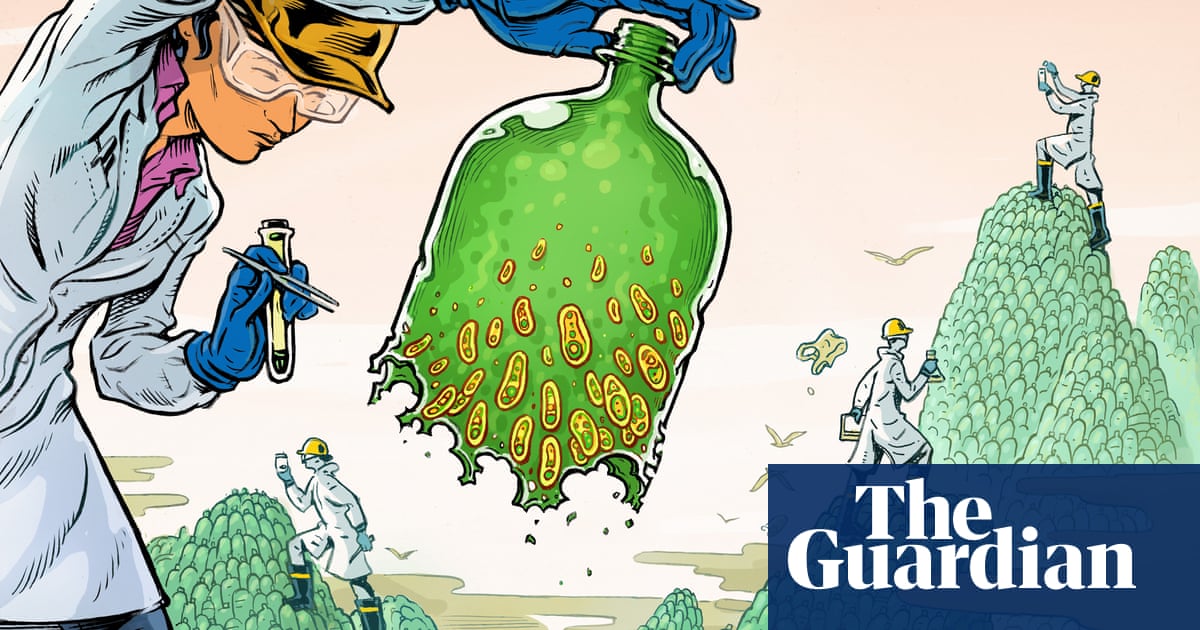
Researchers from the United States and Britain accidentally engineered an enzyme that eats plastic.
The landmark development may eventually help solve the growing problem of plastic pollution, a study said Monday.
The enzyme is able to digest polyethylene terephthalate, or PET - a form of plastic patented in the 1940s and now used in millions of tons of plastic bottles. PET plastics can persist for hundreds of years in the environment and currently pollute large areas of land and sea worldwide.
More than eight million tons of plastic are dumped into the worlds oceans every year, and concern is mounting over this petroleum-derived products toxic legacy on human health and the environment.
Despite recycling efforts, most plastic can persist for hundreds of years in the environment, so researchers are searching for better ways to eliminate it.
Researchers from Britain’s University of Portsmouth and the US Department of Energy’s National Renewable Energy Laboratory made the discovery while examining the structure of a natural enzyme thought to have evolved in a waste recycling center in Japan.
Finding that this enzyme was helping a bacteria to break down, or digest, PET plastic, the researchers decided to “tweak” its structure by adding some amino acids, said John McGeehan, a professor at Portsmouth who co-led the work.
This led to a serendipitous change in the enzyme’s actions - allowing its plastic-eating abilities to work faster.
“We’ve made an improved version of the enzyme better than the natural one already,” McGeehan told Reuters in an interview. “That’s really exciting because that means that there’s potential to optimize the enzyme even further.”
Using a super-powerful X-ray, 10 billion times brighter than the Sun, they were able to make an ultra-high-resolution three-dimensional model of the enzyme.
Scientists from the University of South Florida and the University of Campinas in Brazil did computer modeling which showed PETase looked similar to another enzyme, cutinase, found in fungus and bacteria.
One area of the PETase was a bit different, though, and researchers hypothesized that this was the part that allowed it to degrade man-made plastic.
So they mutated the PETase active site to make it more like cutinase, and unexpectedly found that this mutant enzyme was even better than the natural PETase at breaking down PET.
Researchers say they are now working on further improvements to the enzyme, with the hope of eventually scaling it up for industrial use in breaking down plastics.
"Serendipity often plays a significant role in fundamental scientific research, and our discovery here is no exception," said McGeehan.
"Although the improvement is modest, this unanticipated discovery suggests that there is room to further improve these enzymes, moving us closer to a recycling solution for the ever-growing mountain of discarded plastics."
Independent scientists not directly involved with the research said it was exciting, but they cautioned that the enzyme’s development as a potential solution for pollution was still at an early stage.
“Enzymes are non-toxic, biodegradable and can be produced in large amounts by microorganisms,” said Oliver Jones, an expert in analytical chemistry at Royal Melbourne Institute of Technology University. “There is strong potential to use enzyme technology to help with society’s growing waste problem by breaking down some of the most commonly used plastics.”
Douglas Kell, a professor of bio-analytical science at Manchester University, said further rounds of work “should be expected to improve the enzyme yet further”.
“All told, this advance brings the goal of sustainably recyclable polymers significantly closer,” he added.












